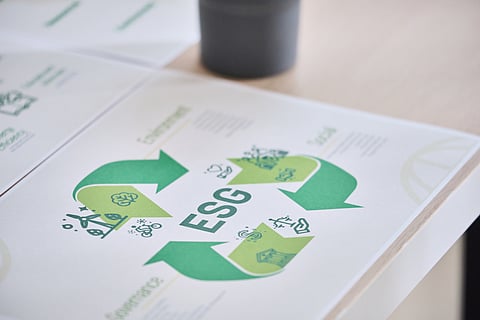

The United Nations-mandated Sustainable Development Goal (SDG) 12 talks about ’responsible consumption and production’. Specifically, target 12.6 states that, “encourage companies, especially large and transnational companies, to adopt sustainable practices and to integrate sustainability information into their reporting cycle”.
Similarly, target 12.8 states, “By 2030, ensure that people everywhere have the relevant information and awareness for sustainable development and lifestyles in harmony with nature”.
These targets are intended to ensure that the consumer goods industry contributes to achieving sustainable development goals. The consumer goods industry, with its manufacturing, supply, consumption and disposal operations, leaves a large carbon footprint in the environment. Reducing this ecological impact can significantly help in mitigating climate change.
Often, it is argued that degrowth can help attain better ecological scenarios and that conspicuous consumption must be brought down. However, ideas such as degrowth may not be appealing to developing countries as much as there might be certain apprehensions about their effectiveness.
Reducing economic activity may have unanticipated consequences for developing countries such as India, making such theoretical optimism unrealistic. Environmentalism of the poor also means being aware of the needs of marginalised groups in society who may be impacted by overt environmental activism.
At this point, India, with a large youth population, requires employment and growth to reap the demographic dividend. This is why the SDGs are holistic in nature, addressing a wide range of human issues that, when combined, lead to sustainable development.
But all this poses a big challenge in terms of how we achieve a sustainable pathway without hurting our economic security. This is where the eco-labels come to the rescue. Eco-labels are rating frameworks that certify a consumer good as eco-friendly. They may have several rating levels which may reflect the quantum of ecological soundness.
The primary purpose of these labels is to inform consumers about the ecological footprint of the products they consume, allowing them to make better decisions. It is impossible for a lay consumer to research and inquire about the environmental impact of a sophisticated product that they are using.
As a result, it is critical to make it easier for them to understand a product’s environmental impact, which aligns with target 12.8. Eco-labels could be an excellent way to accomplish this. Finally, this does not harm business, but rather steers it in a more sustainable direction.
There are various eco-labels and green ratings popular around the world and India. Some are developed by government agencies, while others are created by civil society organisations or private interest groups.
Most of these eco-labels consider a product’s environmental impact throughout its life cycle, from manufacturing to disposal. They are of immense help to environmentally conscious consumers who want to make an eco-friendly choice when it comes to their consumption.
The benefits of eco-labels extend to multiple stakeholders. Consumers save time searching for the right product, live a more environmentally friendly lifestyle and benefit from improved health. Producers gain an advantage in the market competition by appealing to customers with eco-friendly products, improving their environmental, social and governance or ESG reports and thus attracting more investments.
The environment and society as a whole will undoubtedly benefit from cleaner air, water, soil and energy.
Eco-labels, despite their immense utility, are not widely used in our country. A mission-mode awareness campaign based on this concept is required to facilitate consumer-driven demand for such products. The campaign that promoted hallmarks in jewellery could serve as a model for this purpose.
The Bureau of Indian Standards must update its Ecomark scheme to accommodate new products and develop standards for more consumer goods that can be labelled for environmental reasons. Producers must pay a fee and meet certain standards in order to obtain such certifications, which serves as a disincentive in this pursuit.
However, if the demand for eco-friendly products rises, producers will not hesitate to design their products accordingly and obtain such certifications in order to capture the market. Such labelling may also boost the carbon credit market, which may be of interest to corporations.
Furthermore, these labels have the potential to reduce greenwashing in various companies’ marketing strategies by certifying an authentic eco-friendly product.
Eco-labeling is gradually gaining popularity in India. GRIHA is a case in point. Unfortunately, eco-labelled products have not had a large-scale penetration into Indian markets. Adding to this is the fact that very few products are undergoing the eco-labelling process and not many product categories have established eco-labelling standards.
As a result, more research and development are needed to create frameworks for rating a wider range of consumer goods in terms of environmental and health impacts. This will increase consumer participation in conservation and spark a mass movement towards sustainability, which is the Mission LiFE’s goal.
One major challenge in meeting Net Zero targets by 2070 is distinguishing between what is green and what is not. Eco-labelling could be a step in the right direction to achieve this. As a result, now is the time for the government to encourage both consumers and producers to follow suit.
Aakash Bajpai is student of Indian Institute of Forest Management and an alumnus of Tata Institute of Social Sciences
Views expressed are the author’s own and don’t necessarily reflect those of Down To Earth